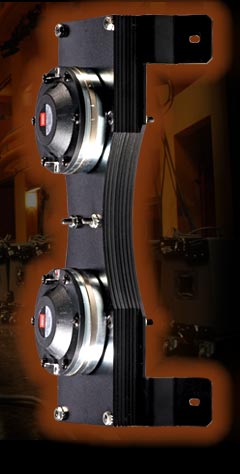

| View Paraline Lens Assembly |
| | Paraline Element | Synergy Horn | Tapped Horn | EASE Focus | |
|
|
|
Technology - Paraline Element One of the most difficult aspects in the design of a line array loudspeaker is finding an effective way to control the vertical dispersion characteristics of the high frequency material. In order for a line array cabinet to be effective, the horizontal dispersion must be wide enough to deliver effective room coverage, but the vertical dispersion must be tightly focused and leave the loudspeaker in a narrow, virtually flat front wave that seamlessly couples with waves emanating from the cabinets immediately above and below in the array. If this is done effectively, then program from a line of cabinets leaves the system as a combined, single wave known as an Isowave, in perfect phase with a minimum of cabinet interference, comb filtering or lobing. A conventional high frequency horn design, like that used in typical point source loudspeaker designs, creates a wave with far too much curve as it leaves the cabinet to work in a line array system. To modify a conventional horn to create a wave as focused and as narrow as required for effective coverage in a line array, the horn would have to be far too long to be physically practical to build, to move or to use in any loudspeaker system. The Paraline horn lens, designed and patented by Tom Danley, is capable of producing a wavefront shape of a horn that in conventional terms would be metres long using an element less than one inch deep. It creates desired exit wavefront curvature in a small faction of the normally required path length and effectively takes care of the impractical depth needed to make an array of horns that sum into a non-interfering source. When combined with the Synergy Horn, the Paraline element controls the vertical dispersion and the Synergy Horn controls the focused and controlled |
|
|